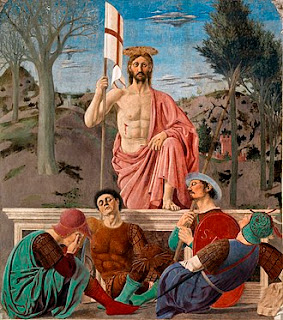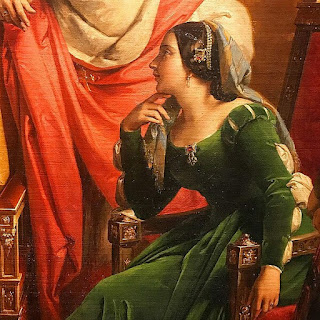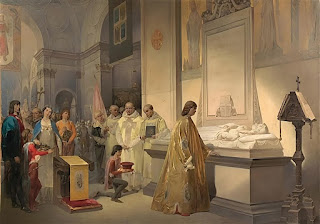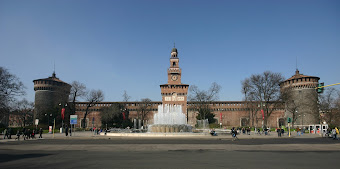Friar who became known as ‘Father of Accounting’
 |
| Jacopo de' Barbari's portrait of Luca Pacioli with an unknown geometry student attending |
Taking advantage of the development of the printing press, Pacioli is thought to have published at least 10 mathematical textbooks, of which the best known is his Summa de arithmetica, geometria, Proportioni et proportionalita - usually known as simply Summa.
Published in Venice in 1494, it was a comprehensive treatise of every aspect of mathematical knowledge that had been explored to that time and the first book to include a description of the double-entry book-keeping system, widely used by Venetian merchants. The principals he outlined in Summa still influence business practices today.
Pacioli, who taught mathematics in several Italian cities and was appointed the first chair in mathematics at the University of Perugia, was a figure of influence in the arts world as well as commerce.
Having possibly been a student of Piero della Francesca, a pioneer of the use of geometry and perspective in painting and, like Pacioli, a native of Sansepolcro, he later became a close friend of Leonardo da Vinci.
Da Vinci’s drawings illustrated another of his notable works, Divina proportione, an exploration of mathematical and artistic proportion, focussing especially on the so-called golden ratio of proportionality and its application in architecture.
 |
| The title page of a 1523 edition of Pacioli's Summa, his greatest work |
From Venice, he moved to Rome, where he became friends with the architect, artist and mathematician Leon Battista Alberti, before returning to Sansepolcro to enter the Franciscan Order in 1470. In the following years, he taught mathematics in Perugia, Florence, Venice, Milan, Pisa, Bologna and Rome.
After the publication of Summa in 1494, he accepted an invitation from Duke Ludovico Sforza to work in Milan. There he met and taught Leonardo da Vinci, for a time living with the polymath as a house guest. Da Vinci acquired his knowledge of geometry and its applications in art and architecture from his association with Pacioli.
Pacioli might have remained in Milan longer had the city not been overrun by Louis XII of France at the start of the Second Italian War. Ludovico Sforza fled the city, as did Pacioli and da Vinci, first to Mantua, and then Venice.
Although Pacioli left a significant intellectual legacy in the fields of accounting and mathematics, he was effectively accused of plagiarism by 16th-century artist and historian Giorgio Vasari.
Vasari was critical of the inclusion in Divina proportione - without credit - of the translated text of della Francesca’s book, originally written in Latin, De quinque corporibus regularibus, about the geometry of polyhedra - solid objects with polygonal faces, such as pyramids. Other scholars, though, argue that the edition of Divina proportione that Vasari read may have been appended to include della Francesca’s work after Pacioli’s death.
Pacioli’s final university teaching post is thought to have been in Rome during 1514 and 1515, before returning to Sansepolcro as his health began to decline.
 |
| Piero della Francesca's painting, The Resurrection, which may have spared Sansepolcro a WW2 attack |
Sansepolcro, a town nestled in the Valtiberina valley at the foot of the Apennines, has a rich artistic and cultural heritage. As well as being the home town of Luca Pacioli, it is known as the birthplace of Renaissance master Piero della Francesca, whose brilliant painting, The Resurrection, is housed in the Museo Civico di Sansepolcro. The presence of the painting probably saved the town from destruction in World War Two after Tony Clarke, an art-loving British Royal Horse Artillery officer who, halted a planned Allied artillery attack. Another treasure, a 12th-century polychrome wooden crucifix known as the Volto Santo, can be seen in the town’s beautiful Romanesque duomo, the Cattedrale di San Giovanni Evangelista. Look out also for The Lamentation over the Dead Christ, by the Mannerist painter Rosso Fiorentino, in the church of San Lorenzo. Other museums include the Aboca Museum, dedicated to the history of medicinal herbs, featuring antique books, laboratory tools, and botanical collections, as well as the Bernardini-Fatti Museum of Antique Windows, the world’s first museum dedicated to stained glass windows. Sansepolcro’s medieval streets, fortified walls, and historic palazzos make it a delightful place to explore.
 |
| One of Arezzo's notable sights is its sharply sloping medieval main square, Piazza Grande |
Arezzo is one of the wealthiest cities in Tuscany. It is situated about 80km (50 miles) southeast of Florence, at the confluence of four valleys - Tiberina, Casentino, Valdarno and Valdichiana. Its medieval centre suffered massive damage during the Second World War yet the Basilica di San Francesco, with its beautiful frescoes by Piero della Francesca, the central Piazza Grande, with its sloping pavement in red brick, and the Medici Fortress, the duomo and a Roman amphitheatre survived, among other historic sights. Arezzo’s original cathedral was built on the nearby Pionta Hill, over the burial place of Donatus of Arezzo, who was martyred in 363. In 1203 Pope Innocent III had the cathedral moved within the city's walls, to the current site in another elevated position a short walk from Piazza Grande. The interior contains several notable artworks, including a relief by Donatello, entitled Baptism of Christ, and a cenotaph to Guido Tarlati, lord of Arezzo until 1327, said to be designed by Giotto, near to which is Piero della Francesca's Mary Magdalene. The wooden choir of the Grand Chapel was designed by Giorgio Vasari, who was born in Arezzo. The city is home to an annual medieval festival called the Giostra del Saracino (Saracen Joust), in which "knights" on horseback representing different areas of the town charge at a wooden target attached to a carving of a Saracen king and score points according to accuracy. Arezzo had a starring role in Roberto Benigni's film Life Is Beautiful, which won three Academy Awards, as the place in which the main characters live before they are shipped off to a Nazi concentration camp.
Also on this day:
1918: The death in action of WW1 fighter pilot Francesco Baracca
1932: The birth of actress twin sisters Pier Angeli and Marisa Pavan
1951: The birth of Giro d’Italia-winning cyclist Francesco Moser

































